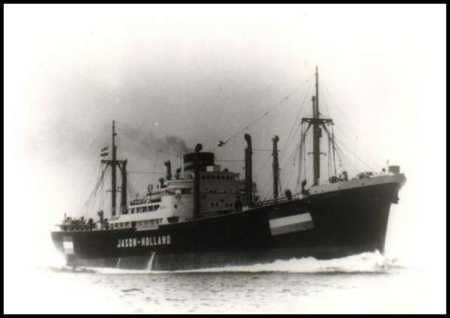- Author
- Wright, Ken
- Subjects
- Battles and operations, Ship histories and stories, WWII operations
- Tags
-
- RAN Ships
- None noted.
- Publication
- September 2006 edition of the Naval Historical Review (all rights reserved)
At the Axis held port of Benghazi in Libya on the afternoon of 8 December 1941, Italian soldiers assembled 2,000 assorted Australian, British, New Zealand and predominately South African prisoners of war to board the Italian cargo ship, Sebastiano Venier, for an estimated 36 hour dash to Italy with a Spica class torpedo boat as escort.
There were three holds forward of the engine room and two aft. Each hold was 12 metres deep and had an upper section three metres below the main deck. Access to the holds was down a vertical ladder. Crude but solidly constructed wooden makeshift latrines had been built to hang over the side of the ship just aft of the foredeck. As the prisoners slowly made their way to number two hold, some noticed a lean man of medium height with blue eyes, brown hair and weatherbeaten skin, wearing a peaked cap and a seaman’s roll neck pullover, directing operations. His manner was brisk and cheerful, his command of the English language fair and he occasionally helped a prisoner over the hatchway covering to the ladder. Once the loading was completed, the hatches were battened down, leaving the prisoners crammed together in the fetid hold. Access to the deck latrines was severely limited, forcing those suffering with dysentery with no choice but to try and make it to the latrine buckets in the holds or relieve themselves where they lay. The ship’s captain decided to hug the relative safety of the Greek coastline, as the route between Italy and North Africa had become the most dangerous Axis shipping supply line during WW2.

(Photo: Ken Wright)
Below the decks of the cargo ship, the prisoners suffered the stench of seasickness, unwashed bodies, filth covered uniforms and overflowing latrine buckets that spread their contents everywhere each time the ship rolled from side to side. Twenty hours had passed since the departure from Benghazi. By mid afternoon on December 9 the weather had began to deteriorate. The Italians were worried about a possible submarine attack and posted every available man around the ship as lookouts. The Italians had every right to worry as Lt. Cdr. E.F. Pizey, captain of the British mine-laying submarine HMS Porpoise, while on routine patrol observed the cargo vessel coming from the southwest with an escort. On board Sebastiano Venier, a lookout spotted a periscope to starboard and raised the alarm. For reasons one can only speculate about, the captain gave the order to abandon ship before any torpedos struck, leaving the POWs still sealed in the holds.
Lt. Cdr. Pizey’s third torpedo struck the Sebastiano Venier low down and just forward of the bulkhead between her number one and two holds. The explosion lifted the ship bodily in the water. The unfortunate occupants in the holds took the full force of the explosion, killing or maiming many. The holds had become slaughter houses. Approximately 300 died in the holocaust. Above deck, confusion reigned. The escorting motor boat, after attempting to depth charge the submarine, had followed the cargo ship’s valiant captain and his crew, leaving the ship and prisoners to the mercy of the rising seas and the British submarine. Some prisoners, in a state of panic, jumped overboard only to perish in the turbulent sea. Others set about rescuing those trapped below and caring for the wounded. Many simply wandered confused around the deck.
It was at this point that the German appeared. He may have been a merchant marine officer or an engineer. Private Spence Edge, a New Zealand soldier, describes the situation in a letter written after the war.
‘For several minutes after the torpedo struck, survivors who managed to get on deck believed the ship was sinking. Fear was greatly increased by the sight of comrades jumping overboard. While the survivors milled around on the main deck, they heard a sharp cry from the boat deck rail. A German in company with the senior Allied non-commissioned officer was calling for their attention. Speaking through the NCO, he assured the POWs the ship was not sinking and could be saved if all the men assembled and remained over the ship’s stern to ease the strain on what now had become a vital bulkhead.’
The additional weight would help to lower the exposed propellers into the water enough so that once the engines became operational it would give enough thrust to take the ship towards the nearby Greek coast.




